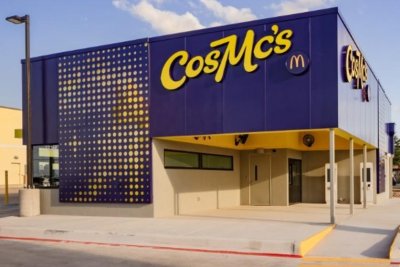Monster Beverage Was a 2,000-Bagger Between 1994 and 2024. Could This Coconut Water Leader Be Next?
Up-and-coming beverage brands can achieve tech-like returns…or better.
It might surprise you that the best-performing stock for the 30 years between 1994 and 2024 wasn’t a tech stock — despite the rise of the internet, the smartphone, cloud computing, and, of course, artificial intelligence.
No, the best-performing stock over that period was none other than Monster Beverage (MNST -0.58%). That’s right, an energy drink largely known for sponsorship at UFC, monster truck, and bull-riding competitions, appreciated 2,000 times over that period, trouncing the return of even the “Magnificent Seven.”
While Monster is still going strong at a $65 billion market cap, it would be hard-pressed to repeat its 2,000 times performance over the next 30 years. But there’s another up-and-coming beverage brand that has only been public for four years and sports a mere $2.4 billion market cap. Could this healthier-for-you drink brand emulate Monster’s massive long-term gains?
Vita Coco brought the tropics to the U.S. market
Vita Coco (COCO -0.26%) has been a public company only since 2021, but it’s a 20-year-old brand founded in 2004 by co-founders Michael Kirban and Ira Liran. While Kirban is currently the chairman of the board, the company’s current CEO since 2022 has been Martin Roper, a veteran of The Boston Beer Company.
Back in 2004, the coconut water category was basically nonexistent in the U.S., but Kirban and Liran saw the opportunity to bring this staple of Brazil and other tropical countries to U.S. consumers. Coconut water has a lot of benefits, including natural sugars, vitamins, and electrolytes, making it a versatile drink that can be used as a sports drink, sweet treat, general hydrator, or alcoholic mixer.
As coconut water caught on, Vita Coco’s founders shrewdly grew the company in an intelligent way, cementing the company’s first-mover advantage. Even after many competitors attempted to break into the category, Vita Coco still commands a near-42% market share of the U.S. coconut water market today, dwarfing that of any other brand.
How Vita Coco boxed out competitors
Over two decades, Vita Coco fended off competition even from the likes of beverage giants Coca-Cola (NYSE: KO) and Pepsi (NASDAQ: PEP). In 2009, Coca-Cola purchased the Zico brand, and Pepsi purchased the O.N.E. brand. But by 2021, Coca-Cola wound up selling Zico back to its founder, and Pepsi ended up selling O.N.E., along with other juice brands, to a private equity firm.
Vita Coco’s management claims its success against bigger, better-funded rivals came down to Vita Coco having “out-hustled, out-innovated, and out-maneuvered the competition.”
But it wasn’t just about execution. The founders were quite strategic and intelligent in how they grew their supply. Coconut water is actually a byproduct of coconut processing that was already taking place in tropical supplier countries like Brazil, the Philippines, and Thailand. So, Vita Coco’s founders went to these suppliers and offered to invest in the equipment needed to extract and preserve coconut water in exchange for long-term supply agreements.
By engaging with these high-quality existing suppliers early and replicating these agreements across the globe, Vita Coco gained high-quality coconut water supply while investing very little capital. Moreover, these agreements somewhat boxed out the competition from accessing these existing and knowledgeable partners.
Vita Coco has nurtured these relationships by reinvesting and donating proceeds back into these communities, qualifying as a public benefit corporation and further boosting its brand halo.
The shrewd strategy and solid brand execution are how Vita Coco grew to $560 million in revenue and $64.4 million in earnings over the past 12 months, while only having invested about $130 million in overall capital. That means Vita Coco is earning just over a 50% return on invested capital (ROIC) today.

Image source: Getty Images.
Category growth and appeal to younger customers could be a winner
At 42% of the U.S. coconut water business, Vita Coco actually has a much higher market share than Monster’s share of the energy drink category, which sits just below 20%. However, the energy drink market is much, much bigger than the coconut water segment, which explains why Monster currently dwarfs Vita Coco’s size.
Still, the coconut water category is growing quickly. Off near-zero in 2004, the U.S. coconut water category has grown to about $908 million in 2024. According to Grand View Horizon research, the market is projected to grow to almost $2.3 billion by 2030, good for a 16.8% compound annual growth rate. This higher growth is due to coconut water’s popularity with younger generations and high-growth urban and minority demographics.
Globally, coconut water is more established at about $7.1 billion. However, the global market is also set to grow at an above-gross-domestic-product (GDP) pace, at 7.2% compounded over the next 10 years, set to reach $14.5 billion by 2035, according to research firm Future Market Insights.
Can Vita Coco capitalize?
While Coca-Cola and Pepsi have retreated for now, the question is, can Vita Coco maintain or grow its share? There is still a lot of incoming competition from new and private brands, especially if coconut water turns out to be the attractive growth category that’s projected.
One concern is that there isn’t as much differentiation among coconut water brands as, say, flavored energy drinks, which have a lot more involved in their recipes. Varied flavors and more intricate recipes can lead to more brand differentiation. That may not last with coconut water, which is more similar to milk or orange juice — categories that are harder to differentiate.
That’s evidenced in Vita Coco’s lower gross margin, which stands at 36% today. That compares with much higher gross margins for Monster, Coca-Cola, and Pepsi, whose gross margins range from the mid-50s to low-60s. While Vita Coco makes a high ROIC, that’s a function of having invested very little capital, not high margins.
Still, that lower gross margin may also fend off competition, which may not find it easy or worthwhile to compete at such low margins. And if Vita Coco can hold off serious competition for long enough, it may be able to raise prices and margins down the road as it becomes more dominant.
All in all, I’d say Vita Coco has a good shot of multibagger returns over the long term, even if its current price-to-earnings (P/E) ratio of around 40 looks pricey at the moment. As such, it’s a name to watch, especially for younger investors, and a stock to pick up on any pullbacks.


